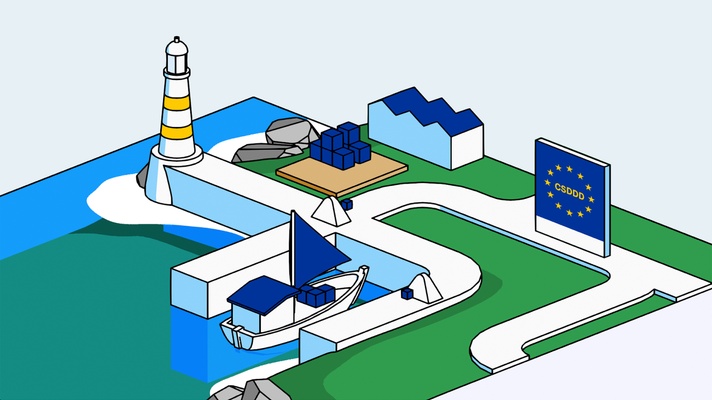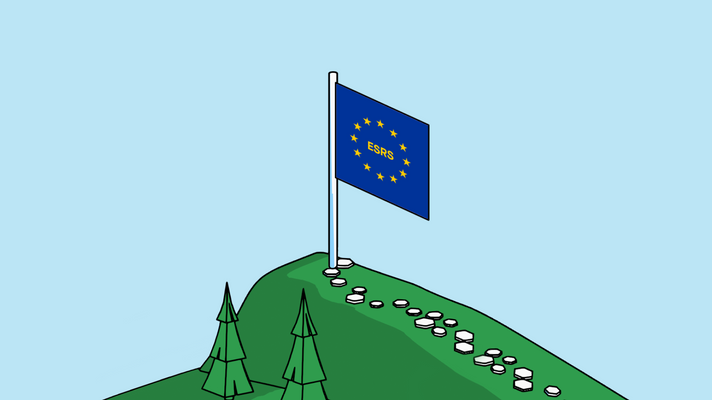SBTN releases first science-based targets for land


- Author
- Antoine VallierBiodiversity footprint expert
- Category
- Climate Essentials
- Topics
- RegulationsTargets
- Published
- 13 March 2023
Contents
- What's land degradation?
- What do the land targets set out to achieve?
- What do the land targets mean for biodiversity?
- What are the three land targets?
- 1. The non-conversion of natural ecosystems
- 2. Land footprint reduction
- 3. Landscape engagement
- Do the targets cover the entire value chain?
- How will progress towards the targets be measured?
- What are the SBTN land targets compatible with?
- What are the present limitations of the targets?
- 1. Currently only agricultural uses are covered
- 2. The targets aren't directly aligned with the COP15 objectives
- Next steps
On February 14, the Science-Based Targets Network (SBTN) released a preliminary set of targets for land use. These are aimed at helping companies to align their efforts with the speed and scale required to stop land degradation, and to prevent and reverse the loss of biodiversity.
What's land degradation?
Land degradation, i.e. the deterioration of the quality and productivity of land, has been an ongoing issue for many years and is directly linked to climate change. But according to the Global Land Outlook report by the United Nations, it's accelerated in the last few decades due to factors such as population growth, urbanization, industrialization, and unsustainable agricultural practices.
The report estimates that 25% of the Earth's land is highly degraded, and another 44% is moderately or slightly degraded.
What do the land targets set out to achieve?
The targets are designed to support companies in taking a more holistic approach to climate action. As the SBTN puts it: "Land science-based targets build on and complement climate science-based targets by incentivizing corporate action – beyond reducing greenhouse gas emissions – to address the overall need of the environment."
They've been eagerly anticipated by business leaders whose companies have adopted science-based targets, as they send a clear message to stakeholders that they're serious about taking action to protect the environment. They're also increasingly required by regulators.
What do the land targets mean for biodiversity?
The SBTN land targets will influence the biodiversity strategies of both companies and investors, as they’ll address the impact that companies have on terrestrial (land-based) ecosystems. Ecosystem destruction has been identified as one of the main factors responsible for the erosion of biodiversity by the Intergovernmental Science-Policy Platform on Biodiversity and Ecosystem Services (IPBES).
It'll also take into account the intensity of land use and address soil pollution. An SBTN land hub dedicated to biodiversity is pursuing its own roadmap with an angle of analysis targeted at the conservation of species and ecosystems.
What are the three land targets?
1. The non-conversion of natural ecosystems
This refers to the idea of preserving existing natural ecosystems, such as forests, wetlands, grasslands, and other habitats, and not converting them into other types of land use. It means avoiding activities like deforestation, mining, or building infrastructure that would permanently alter or destroy these ecosystems.
2. Land footprint reduction
This refers to the process of reducing the amount of land used for human activities such as agriculture, urban development, and infrastructure. It can be achieved by adopting more efficient land use practices, such as intensification of agricultural production, urban densification, and sustainable transportation systems. The reduction of land occupation is important for preserving natural ecosystems and the biodiversity they support – but few company leaders are currently aware of this.
Globally, we’re not on track with COP15’s objective of protecting 30% of the surface of emerged land by 2030. This is why a reduction in land occupation by human activities is absolutely necessary.
3. Landscape engagement
This refers to the process of actively involving stakeholders (such as local communities, landowners, and government agencies) in the planning, design, and management of landscapes. The goal is to foster collaboration, build trust, and achieve more sustainable and equitable outcomes that benefit both people and the environment.
Do the targets cover the entire value chain?
While the end goal is for the targets to cover all elements of the value chain, the first version doesn’t refer to downstream actions. In the case of upstream activities, there are different objectives and reporting requirements depending on activity type. What’s particularly taken into account is whether raw materials are purchased directly or indirectly, in their raw form or as an ingredient of highly processed products.
How will progress towards the targets be measured?
The SBTN’s targets are quantified and dated. Thanks to this, we can understand how much work is needed to reach these goals. For example, the SBTN has set an objective of 100% conversion-free natural areas – to be achieved by producers of raw materials by 2025.
In the case of land occupation, the target is to reduce the total occupied surface by 0.35% per year and to reduce production by 1% per year. The latter target is higher to take into account the growing food needs due to the increase in the world population.
The third target, landscape engagement, is broader and more complex. Currently its measurement is based on the Ecosystem Integrity Index – but this is likely to be adapted as the framework evolves.
What are the SBTN land targets compatible with?
The SBTN land targets are compatible with the science based targets initiative (SBTi’s) Forest, Land and Agriculture(FLAG) guidance. This provides the first standard method for companies to set science-based targets that include land-based emission reductions and removals. The guidance enables them to reduce 22% of global GHG emissions from agriculture, forestry, and other land use.
What are the present limitations of the targets?
1. Currently only agricultural uses are covered
This is understandable given the importance of this activity on land pressure – today 50% of land globally is used to produce our food or that of our livestock. However, it'll be important to be able to quickly engage the other high-impact value chains related to forestry and, to a lesser extent, mining.
2. The targets aren't directly aligned with the COP15 objectives
The COP15 framework is aimed at countries, and the indicators chosen don’t directly apply to companies. The SBTN is expected to act as a translator of those global objectives for businesses. However, the timelines for these two initiatives were very different.
The work of the SBTN took several years and even if drafts of the COP15 objectives were able to circulate in the meantime, it was difficult to anticipate the trade-offs that would be made during the negotiations in Montreal.
The SBTN land targets are just the first step in aligning with the goals of COP15. The SBTN already guarantees overall consistency and ensures that this subject will be at the heart of the discussions for the next versions.
Next steps
The good news is that there's no need to wait to take action. Don’t hesitate to participate in the public consultation which is open until March 21.
More stories
Track, report and act
Sweep helps you get your carbon on-track
Sign up to The Cleanup, our monthly climate newsletter


© Sweep 2024


